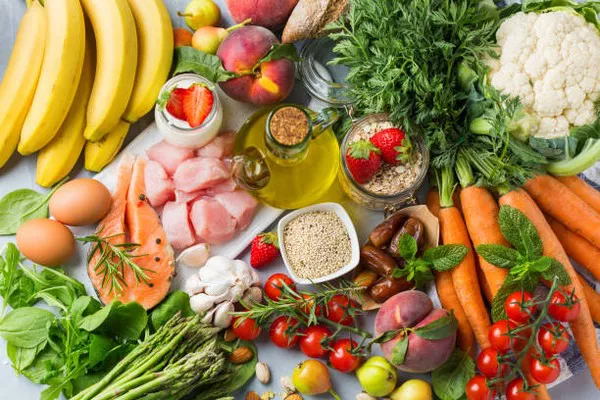If you’re embarking on the 75 Hard challenge, a rigorous 75-day program designed to test your mental toughness and discipline, you might be wondering what the best diet looks like for this journey. Here’s an in-depth guide to help you navigate the dietary component of this demanding challenge, along with a sample meal plan to get you started.
What is the 75 Hard Challenge?
The 75 Hard challenge, created by Andy Frisella, involves five core rules:
- Stick to a diet (no cheat meals or alcohol) for 75 days.
- Drink a gallon of water every day.
- Exercise twice per day for 45 minutes each session, with one workout being outdoors.
- Read 10 pages of a non-fiction book daily.
- Take a daily progress photo.
The challenge emphasizes rigorous consistency and mental discipline. If you miss any of these tasks on any day, you must start over from day one.
What to Eat on the 75 Hard Challenge
The 75 Hard diet is flexible, allowing you to choose a diet plan that works for you, as long as you adhere to it strictly for the full 75 days. Here’s what you need to keep in mind:
Balanced Nutrition: The diet should not be overly restrictive or lacking in essential nutrients. Avoid extremes like very low-carb or very high-protein diets that could lead to deficiencies.
Sustainable Choices: Opt for a diet plan that you can maintain for 75 days. The Mediterranean and DASH diets are often recommended due to their balance and health benefits.
Sample 75 Hard Diet Meal Plan
To help you get started, here’s a week’s worth of meals designed to be nutritious, satisfying, and varied. Adjust portions and ingredients according to your personal preferences and nutritional needs.
Monday
- Breakfast: Overnight oats with low-fat milk, berries, almond butter, and a latte or cup of orange juice.
- Lunch: Whole wheat wrap with lettuce, tomato, turkey, and low-fat Swiss cheese.
- Snacks: Apple and string cheese.
- Dinner: Salmon with roasted broccoli, cauliflower, and sweet potatoes.
- Dessert: Strawberries with melted dark chocolate.
Tuesday
- Breakfast: Whole wheat English muffin with scrambled eggs, avocado, spinach, and tomatoes.
- Lunch: Mixed green salad with grilled chicken, veggies, quinoa, and an olive oil vinegar-based dressing.
- Snacks: Whole wheat naan with hummus.
- Dinner: Lean turkey chili with beans, veggies, and whole grain cornbread.
- Dessert: Popcorn.
Wednesday
- Breakfast: Chia seed pudding with Greek yogurt, topped with bananas, berries, and walnuts.
- Lunch: Tuna salad with avocado oil-based mayo, chopped carrots, and celery.
- Snacks: Guacamole with baby bell peppers and low-sodium tortilla chips.
- Dinner: Mahi-mahi tacos with cabbage slaw and a mixed salad.
- Dessert: Trail mix.
Thursday
- Breakfast: Smoothie bowl with protein powder, Greek yogurt, spinach or kale, banana, strawberries, granola, dried fruit, and nuts.
- Lunch: Chicken tortilla soup with avocado and a mixed green salad.
- Snacks: Pears and cashews.
- Dinner: Stir-fry with bok choy, snap peas, broccoli, tofu, and brown rice.
- Dessert: “Nice” cream made with frozen bananas and cocoa powder.
Friday
- Breakfast: Scrambled eggs with tomatoes, mushrooms, spinach, whole wheat toast, and low-fat cream cheese or avocado.
- Lunch: Snack plate with veggies, hummus, guac, almonds, whole wheat pita bread, hard-boiled eggs, and apple slices.
- Snacks: Dates and walnuts.
- Dinner: Grilled sirloin steak with portobello mushrooms, zucchini, and corn on the cob.
- Dessert: Fruit popsicle with no added sugar.
Saturday
- Breakfast: Whole wheat bagel with smoked salmon, lettuce, tomatoes, red onion, capers, and veggie low-fat cream cheese.
- Lunch: Caesar kale salad with grilled chicken and a side of farro.
- Snacks: Mixed fruit salad.
- Dinner: Lentil soup with a whole wheat dinner roll.
- Dessert: Celery sticks with peanut butter.
Sunday
- Breakfast: Whole wheat pancakes or waffles topped with nut or sunflower butter and bananas.
- Lunch: Grain bowl with brown rice or quinoa, chicken or tofu, avocado, and veggies.
- Snacks: Greek yogurt topped with berries.
- Dinner: Veggie soup (like minestrone) with grilled cheese on whole wheat bread and low-fat cheese.
- Dessert: Skyr yogurt with dark chocolate chips.
Is the 75 Hard Diet Safe?
While the 75 Hard diet can be beneficial if followed properly, there are some considerations:
Restrictiveness: The challenge’s rigidity may not suit everyone. The strict adherence to a single diet and the absence of “cheat meals” can be challenging, especially during social occasions or holidays.
Potential Risks: The emphasis on physical appearance and the requirement to take daily progress photos can be stressful and may not be ideal for everyone.
The key is to focus on a balanced diet that supports your physical and mental well-being throughout the challenge. Opt for nutrient-rich foods and ensure that your diet includes a variety of macronutrients and micronutrients to keep you energized and healthy.
In conclusion, while the 75 Hard challenge demands discipline and commitment, choosing a balanced and sustainable diet plan will help you meet the challenge’s goals and support your overall health.


